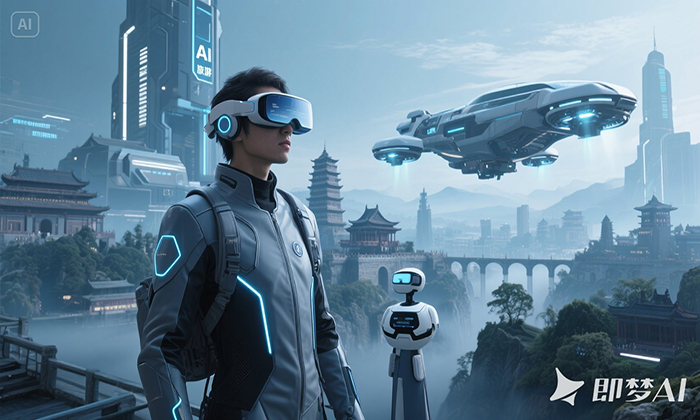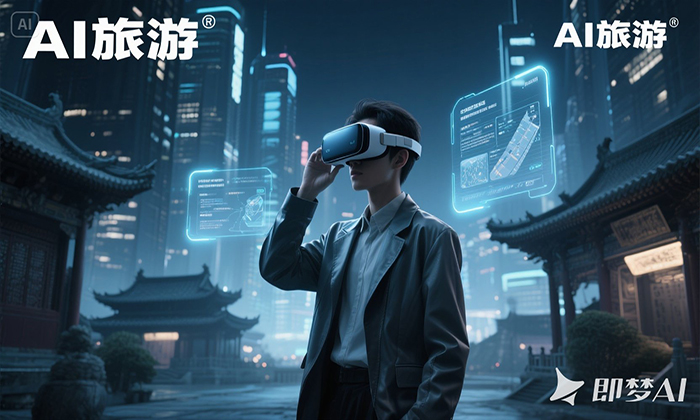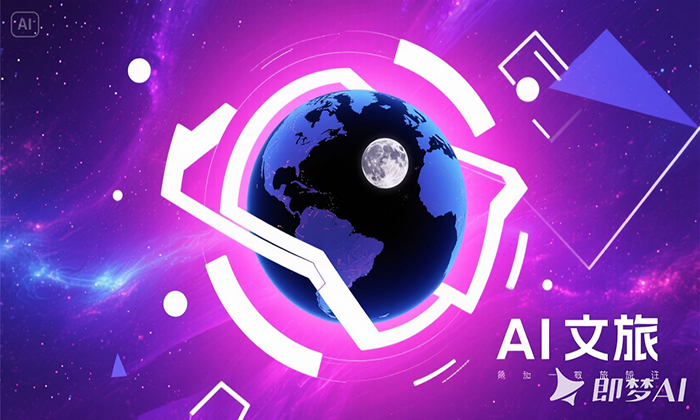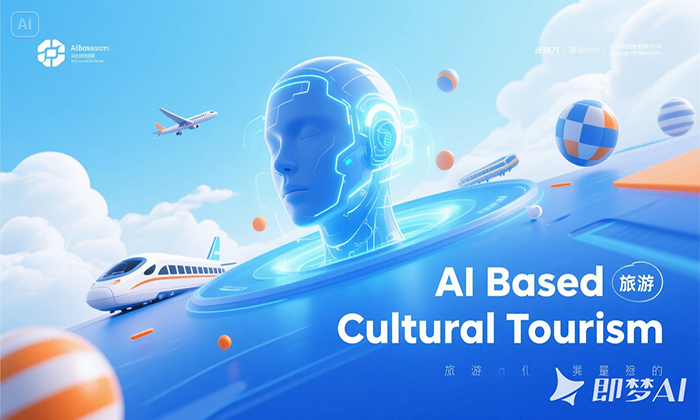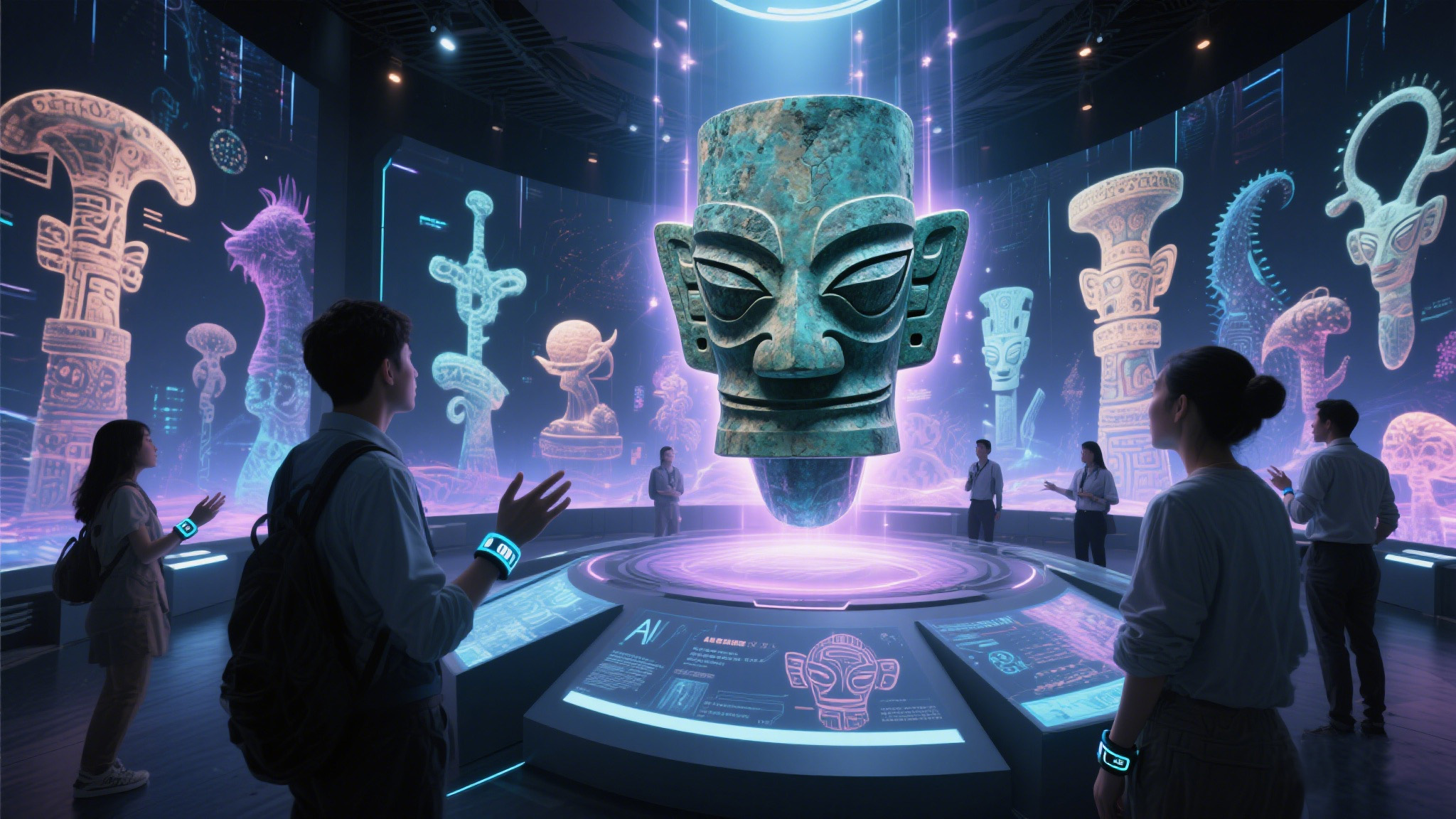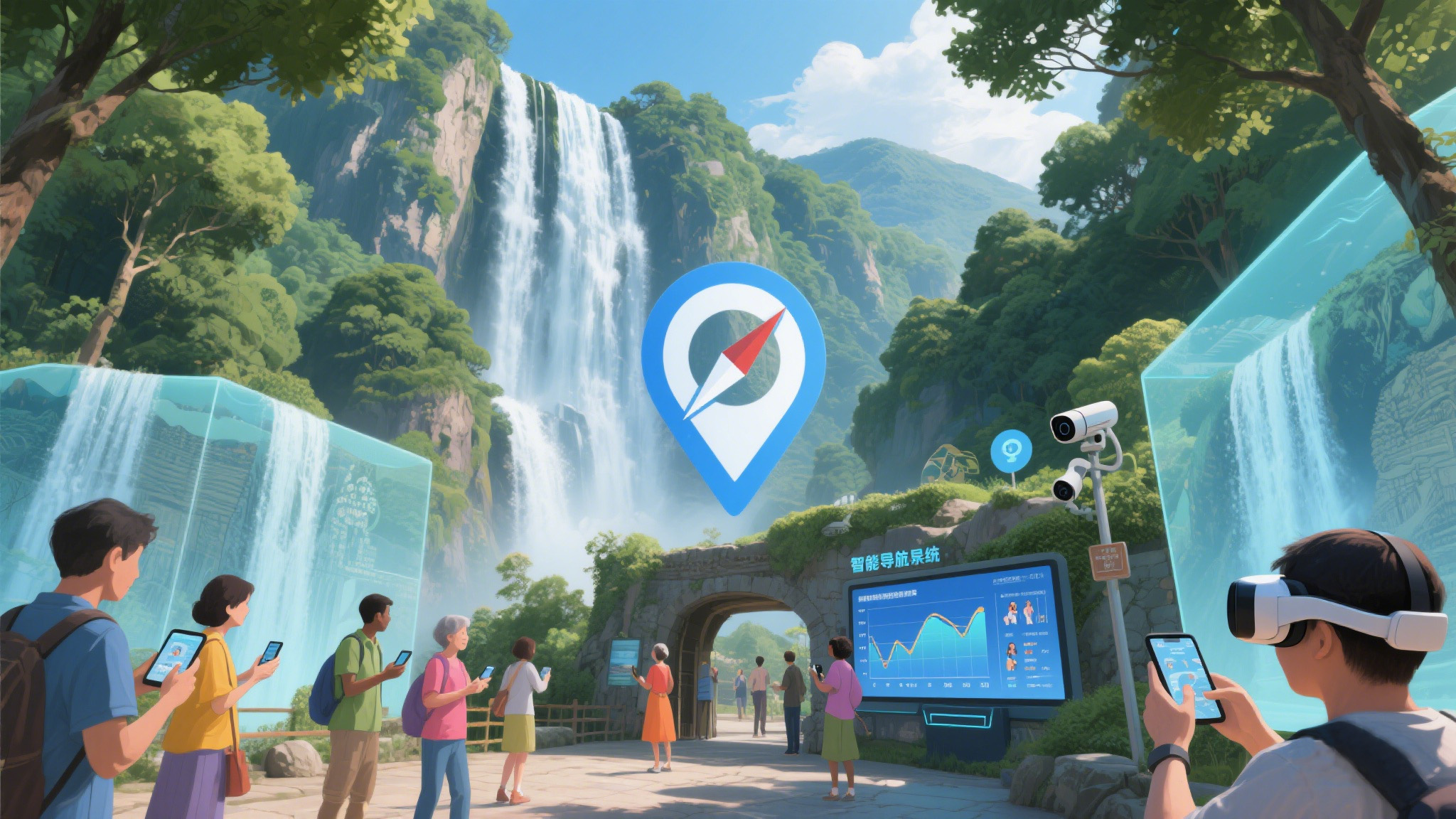The Integration of Artificial Intelligence in Cultural and Tourism Industries
观棋 2025-05-29
In the era of digital transformation, the cultural and tourism industries are undergoing profound changes driven by artificial intelligence (AI). As a transformative technology, AI is reshaping the way people experience culture and engage in tourism, creating new opportunities for innovation, personalization, and sustainability. This article explores the multifaceted applications of AI in cultural heritage preservation, tourist experience enhancement, and industry management, highlighting its potential to revolutionize the 文旅 (cultural and tourism) landscape.
The Integration of Artificial Intelligence in Cultural and Tourism Industries
In the era of digital transformation, the cultural and tourism industries are undergoing profound changes driven by artificial intelligence (AI). As a transformative technology, AI is reshaping the way people experience culture and engage in tourism, creating new opportunities for innovation, personalization, and sustainability. This article explores the multifaceted applications of AI in cultural heritage preservation, tourist experience enhancement, and industry management, highlighting its potential to revolutionize the Culture and Tourism (cultural and tourism) landscape.
1. AI in Cultural Heritage Preservation and Promotion
Cultural heritage is the essence of human civilization, but many historical relics and intangible cultural heritages face threats from natural erosion, human activities, and time. AI has emerged as a powerful tool for preserving these treasures. For instance, advanced computer vision algorithms can analyze high-resolution images of ancient artifacts and architecture to detect subtle damages that are invisible to the naked eye. This enables timely conservation measures, ensuring the long-term survival of cultural relics.
Moreover, AI-based digital reconstruction technologies are bringing lost cultural heritages back to life. By processing vast amounts of archaeological data, 3D modeling algorithms can recreate ancient cities, temples, and artworks with astonishing accuracy. The virtual reconstruction of the ancient city of Palmyra in Syria, destroyed by war, is a remarkable example. Through virtual reality (VR) and augmented reality (AR) interfaces powered by AI, visitors can now explore these reconstructed sites, gaining a deeper understanding and appreciation of historical cultures.
AI also plays a crucial role in promoting cultural heritage globally. Natural language processing (NLP) technologies enable the translation and interpretation of ancient texts, making them accessible to a wider audience. Chatbots equipped with cultural knowledge bases can act as virtual guides, providing interactive storytelling about historical sites and traditions. These applications not only preserve cultural heritage but also foster cross-cultural understanding and engagement.
2. Enhancing Tourist Experience through AI
In the tourism sector, AI is transforming the entire tourist journey, from pre-trip planning to on-site experiences. Smart recommendation systems, powered by machine learning algorithms, analyze tourists' preferences, past behaviors, and real-time data such as weather and crowd conditions to suggest personalized itineraries. These systems can recommend attractions, restaurants, and accommodation that match individual interests, ensuring a more satisfying and efficient travel experience.
During the trip, AI-driven smart guides are becoming increasingly popular. These devices or mobile applications use GPS, computer vision, and NLP to provide real-time information about tourist sites. For example, when visiting a museum, a tourist can point their smartphone camera at a painting, and the AI guide will instantly provide details about the artist, historical context, and artistic techniques. This interactive and informative experience enriches the 游客's understanding and enjoyment of the destination.
AI also enables the creation of immersive experiences. Virtual and augmented reality technologies, combined with AI-generated content, allow tourists to engage with cultural and natural attractions in new ways. In theme parks, AI-powered animatronics and interactive displays create lifelike scenarios that transport visitors to fictional or historical worlds. In natural reserves, AI-based monitoring systems can track wildlife and provide real-time updates, enhancing eco-tourism experiences while ensuring environmental protection.
3. AI for Tourism Industry Management and Sustainability
From a managerial perspective, AI offers valuable solutions for optimizing resource allocation, improving service quality, and ensuring sustainable development. Hotel chains and travel agencies use AI-powered customer relationship management (CRM) systems to analyze guest data and deliver personalized services, enhancing customer satisfaction and loyalty. Revenue management systems driven by AI algorithms can predict demand patterns and adjust prices in real-time, maximizing profitability while maintaining competitive pricing.
In destination management, AI helps in monitoring and managing tourist flows to prevent overcrowding and protect fragile ecosystems. By analyzing data from social media, GPS tracking, and surveillance cameras, destination managers can gain insights into tourist movements and make informed decisions about resource allocation and infrastructure development. For example, in popular tourist spots like the Great Barrier Reef, AI-based monitoring systems help regulate visitor numbers and enforce environmental protection measures, ensuring the long-term sustainability of the site.
Furthermore, AI contributes to sustainable tourism by promoting eco-friendly practices. Smart energy management systems in hotels and tourist facilities use AI to optimize energy consumption, reducing carbon footprints. AI-driven waste management solutions help in efficiently collecting and processing waste, minimizing environmental impact. These applications align with the global trend towards sustainable development, making tourism more responsible and environmentally conscious.
Challenges and Future Prospects
While the integration of AI in the cultural and tourism industries offers numerous benefits, it also presents challenges. Issues such as data privacy, algorithmic bias, and the digital divide need to be addressed to ensure inclusive and ethical AI adoption. Additionally, the high cost of implementing AI technologies and the need for skilled professionals pose barriers for small and medium-sized enterprises in the sector.
Looking ahead, the future of AI in Culture and Tourism lies in further advancements in machine learning, natural language processing, and immersive technologies. The development of more sophisticated AI agents that can understand and respond to human emotions will enable even more personalized and empathetic interactions. The integration of AI with the Internet of Things (IoT) will create smart tourism ecosystems where devices, services, and environments are interconnected, providing seamless and intelligent experiences.
In conclusion, AI is driving a paradigm shift in the cultural and tourism industries, transforming how we preserve, experience, and manage cultural and tourist resources. By harnessing the power of AI, these industries can achieve greater innovation, personalization, and sustainability, creating a more enriching and inclusive future for global travelers and cultural enthusiasts. As technology continues to evolve, the collaboration between policymakers, industry stakeholders, and tech developers will be crucial to unlocking the full potential of AI in shaping the future of Culture and Tourism.
In the era of digital transformation, the cultural and tourism industries are undergoing profound changes driven by artificial intelligence (AI). As a transformative technology, AI is reshaping the way people experience culture and engage in tourism, creating new opportunities for innovation, personalization, and sustainability. This article explores the multifaceted applications of AI in cultural heritage preservation, tourist experience enhancement, and industry management, highlighting its potential to revolutionize the Culture and Tourism (cultural and tourism) landscape.
1. AI in Cultural Heritage Preservation and Promotion
Cultural heritage is the essence of human civilization, but many historical relics and intangible cultural heritages face threats from natural erosion, human activities, and time. AI has emerged as a powerful tool for preserving these treasures. For instance, advanced computer vision algorithms can analyze high-resolution images of ancient artifacts and architecture to detect subtle damages that are invisible to the naked eye. This enables timely conservation measures, ensuring the long-term survival of cultural relics.
Moreover, AI-based digital reconstruction technologies are bringing lost cultural heritages back to life. By processing vast amounts of archaeological data, 3D modeling algorithms can recreate ancient cities, temples, and artworks with astonishing accuracy. The virtual reconstruction of the ancient city of Palmyra in Syria, destroyed by war, is a remarkable example. Through virtual reality (VR) and augmented reality (AR) interfaces powered by AI, visitors can now explore these reconstructed sites, gaining a deeper understanding and appreciation of historical cultures.
AI also plays a crucial role in promoting cultural heritage globally. Natural language processing (NLP) technologies enable the translation and interpretation of ancient texts, making them accessible to a wider audience. Chatbots equipped with cultural knowledge bases can act as virtual guides, providing interactive storytelling about historical sites and traditions. These applications not only preserve cultural heritage but also foster cross-cultural understanding and engagement.
2. Enhancing Tourist Experience through AI
In the tourism sector, AI is transforming the entire tourist journey, from pre-trip planning to on-site experiences. Smart recommendation systems, powered by machine learning algorithms, analyze tourists' preferences, past behaviors, and real-time data such as weather and crowd conditions to suggest personalized itineraries. These systems can recommend attractions, restaurants, and accommodation that match individual interests, ensuring a more satisfying and efficient travel experience.
During the trip, AI-driven smart guides are becoming increasingly popular. These devices or mobile applications use GPS, computer vision, and NLP to provide real-time information about tourist sites. For example, when visiting a museum, a tourist can point their smartphone camera at a painting, and the AI guide will instantly provide details about the artist, historical context, and artistic techniques. This interactive and informative experience enriches the 游客's understanding and enjoyment of the destination.
AI also enables the creation of immersive experiences. Virtual and augmented reality technologies, combined with AI-generated content, allow tourists to engage with cultural and natural attractions in new ways. In theme parks, AI-powered animatronics and interactive displays create lifelike scenarios that transport visitors to fictional or historical worlds. In natural reserves, AI-based monitoring systems can track wildlife and provide real-time updates, enhancing eco-tourism experiences while ensuring environmental protection.
3. AI for Tourism Industry Management and Sustainability
From a managerial perspective, AI offers valuable solutions for optimizing resource allocation, improving service quality, and ensuring sustainable development. Hotel chains and travel agencies use AI-powered customer relationship management (CRM) systems to analyze guest data and deliver personalized services, enhancing customer satisfaction and loyalty. Revenue management systems driven by AI algorithms can predict demand patterns and adjust prices in real-time, maximizing profitability while maintaining competitive pricing.
In destination management, AI helps in monitoring and managing tourist flows to prevent overcrowding and protect fragile ecosystems. By analyzing data from social media, GPS tracking, and surveillance cameras, destination managers can gain insights into tourist movements and make informed decisions about resource allocation and infrastructure development. For example, in popular tourist spots like the Great Barrier Reef, AI-based monitoring systems help regulate visitor numbers and enforce environmental protection measures, ensuring the long-term sustainability of the site.
Furthermore, AI contributes to sustainable tourism by promoting eco-friendly practices. Smart energy management systems in hotels and tourist facilities use AI to optimize energy consumption, reducing carbon footprints. AI-driven waste management solutions help in efficiently collecting and processing waste, minimizing environmental impact. These applications align with the global trend towards sustainable development, making tourism more responsible and environmentally conscious.
Challenges and Future Prospects
While the integration of AI in the cultural and tourism industries offers numerous benefits, it also presents challenges. Issues such as data privacy, algorithmic bias, and the digital divide need to be addressed to ensure inclusive and ethical AI adoption. Additionally, the high cost of implementing AI technologies and the need for skilled professionals pose barriers for small and medium-sized enterprises in the sector.
Looking ahead, the future of AI in Culture and Tourism lies in further advancements in machine learning, natural language processing, and immersive technologies. The development of more sophisticated AI agents that can understand and respond to human emotions will enable even more personalized and empathetic interactions. The integration of AI with the Internet of Things (IoT) will create smart tourism ecosystems where devices, services, and environments are interconnected, providing seamless and intelligent experiences.
In conclusion, AI is driving a paradigm shift in the cultural and tourism industries, transforming how we preserve, experience, and manage cultural and tourist resources. By harnessing the power of AI, these industries can achieve greater innovation, personalization, and sustainability, creating a more enriching and inclusive future for global travelers and cultural enthusiasts. As technology continues to evolve, the collaboration between policymakers, industry stakeholders, and tech developers will be crucial to unlocking the full potential of AI in shaping the future of Culture and Tourism.







